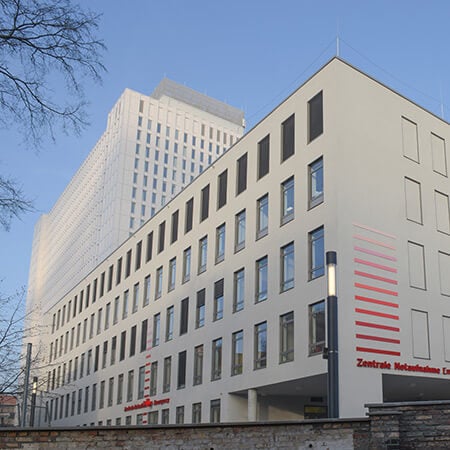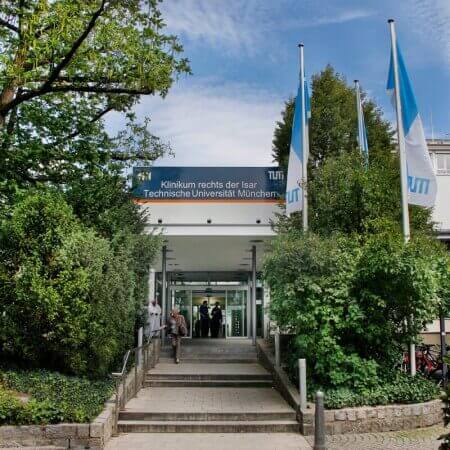Top Hospitals for Treatment of Hip Osteoarthritis (Coxarthrosis) in Germany
Each hospital in this list meets Booking Health’s strict international standards: at least 250 surgeries per year, ISO‑certified quality management, and documented survival outcomes. Our medical board then ranks the clinics by clinical expertise, technology, and patient‑satisfaction scores.

According to the reputable Focus magazine, the Charite University Hospital Berlin ranks 1st among the best healthcare facilities in Germany! The hospital is one of the largest and leading university medical complexes in Europe, and also consistently holds leading positions in the international medical arena. The Charite operates









Hip osteoarthritis diagnostics
Price from:
0.00
Go to the program Hip osteoarthritis (coxarthrosis) treatment with hip replacement (hip endoprosthesis)
Price from:
30970.84
Go to the program Hip osteoarthritis (coxarthrosis) treatment with hip replacement (hip endoprosthesis)
Price from:
30914.46
Go to the program Hip replacement and rehabilitation
Price from:
40332.08
Go to the program Hip endoprosthesis replacement
Price from:
51188.26
Go to the program Diagnosis and conservative treatment of hip osteoarthritis
Price from:
8262.96
Go to the program Hip arthroscopy in hip osteoarthritis
Price from:
14188.1
Go to the program Hip endoprosthesis replacement and rehabilitation
Price from:
56389.47
Go to the program 
According to the Focus magazine in 2019, the University Hospital Würzburg ranks among the top national German hospitals! The hospital is one of the oldest medical facilities in Germany. The centuries-old traditions of first-class treatment are combined with the very latest achievements of modern evidence-based medicine and 









Hip osteoarthritis diagnostics
Price from:
0.00
Go to the program Hip osteoarthritis diagnostics
Price from:
0.00
Go to the program Hip osteoarthritis (coxarthrosis) treatment with hip replacement (hip endoprosthesis)
Price from:
20583.04
Go to the program Hip osteoarthritis (coxarthrosis) treatment with hip replacement (hip endoprosthesis)
Price from:
20686.4
Go to the program Hip osteoarthritis (coxarthrosis) treatment with hip replacement (hip endoprosthesis)
Price from:
20531.88
Go to the program Hip osteoarthritis (coxarthrosis) treatment with hip replacement (hip endoprosthesis)
Price from:
20600.79
Go to the program Hip replacement and rehabilitation
Price from:
27067.02
Go to the program Hip replacement and rehabilitation
Price from:
27097.3
Go to the program Hip endoprosthesis replacement
Price from:
34701.42
Go to the program Hip endoprosthesis replacement
Price from:
34407.01
Go to the program Diagnosis and conservative treatment of hip osteoarthritis
Price from:
5680.1
Go to the program Diagnosis and conservative treatment of hip osteoarthritis
Price from:
5663.4
Go to the program Hip arthroscopy in hip osteoarthritis
Price from:
9805.39
Go to the program Hip arthroscopy in hip osteoarthritis
Price from:
9959.9
Go to the program Hip endoprosthesis replacement and rehabilitation
Price from:
37177.78
Go to the program Hip endoprosthesis replacement and rehabilitation
Price from:
37326.03
Go to the program 
The University Hospital Rechts der Isar Munich was founded in 1834. It combines long traditions with the very latest advances in modern medicine. The medical facility includes 33 specialized departments and 20 interdisciplinary centers, where patients can receive top-class medical care in all medical fields. The hospital annuall







Hip osteoarthritis diagnostics
Price from:
0.00
Go to the program Hip osteoarthritis (coxarthrosis) treatment with hip replacement (hip endoprosthesis)
Price from:
23323.54
Go to the program Hip osteoarthritis (coxarthrosis) treatment with hip replacement (hip endoprosthesis)
Price from:
23057.32
Go to the program Hip replacement and rehabilitation
Price from:
30471.5
Go to the program Hip endoprosthesis replacement
Price from:
38649.82
Go to the program Diagnosis and conservative treatment of hip osteoarthritis
Price from:
6271
Go to the program Hip arthroscopy in hip osteoarthritis
Price from:
10833.73
Go to the program Hip endoprosthesis replacement and rehabilitation
Price from:
42270.42
Go to the program 

